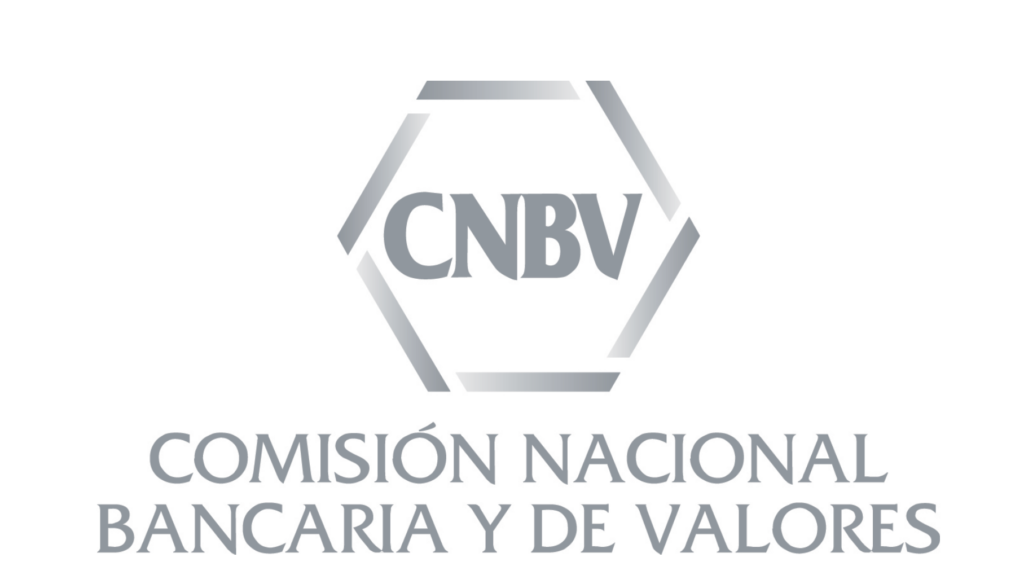TL;DR: Predicting the Future of Stablecoins: Regulatory and Market Insights
- Stablecoins are increasingly pivotal in the cryptocurrency ecosystem.
- Major players include AWS, Google, and Circle Internet Group.
- Regulatory frameworks are evolving, notably with the EU’s MiCA regulation.
- Ethereum and Solana are key blockchain platforms supporting stablecoins.
- The market is seeing the rise of prominent stablecoins like USDC alongside emerging competitors.
Overview of Stablecoins in Today’s Market
Stablecoins have emerged as a crucial element in the cryptocurrency landscape, designed to maintain a stable value relative to a fiat currency or a basket of goods. Unlike traditional cryptocurrencies, which can experience significant volatility, stablecoins aim to provide a reliable medium of exchange and store of value.
The market for stablecoins has expanded rapidly, with various types catering to different needs. These include fiat-collateralized stablecoins, like USDC and Tether (USDT), which are backed by reserves of fiat currency, and algorithmic stablecoins, which use algorithms to control supply and demand.
As of now, the total market capitalization of stablecoins is substantial, reflecting their growing acceptance among investors and traders. They are increasingly used in decentralized finance (DeFi) applications, providing liquidity and facilitating transactions without the need for traditional banking systems.
The rise of stablecoins has also prompted discussions around regulatory measures, as governments seek to understand their implications for financial stability and consumer protection. This evolving landscape presents both opportunities and challenges for stakeholders in the cryptocurrency ecosystem.
Key Players in the Stablecoin Ecosystem
The stablecoin ecosystem is supported by a variety of key players, each contributing to its growth and functionality. Among these, technology giants like AWS and Google play significant roles, providing the infrastructure and services that enable stablecoin operations.
AWS and Amazon’s Role
Amazon Web Services (AWS) has become a backbone for many blockchain projects, including those involving stablecoins. By offering scalable cloud computing solutions, AWS allows stablecoin issuers to manage their operations efficiently. This includes everything from data storage to transaction processing, ensuring that stablecoins can operate seamlessly in a digital economy.
AWS’s robust security measures and reliability also enhance trust in stablecoin transactions, making it a preferred choice for many companies in the cryptocurrency space. As stablecoins continue to gain traction, AWS’s role in supporting their infrastructure will likely expand, further solidifying its position in the market.
Google’s Influence
Google’s influence in the stablecoin ecosystem is also noteworthy. The company has been exploring blockchain technology and its applications, potentially integrating stablecoins into its payment systems. By leveraging its vast user base and technological expertise, Google could facilitate the broader adoption of stablecoins in everyday transactions.
Moreover, Google’s cloud services provide essential support for blockchain applications, enabling developers to build and deploy stablecoin solutions efficiently. As Google continues to innovate in this space, its impact on the stablecoin market could be profound, shaping how consumers and businesses interact with digital currencies.
Blockchain Platforms Supporting Stablecoins
Stablecoins are primarily built on blockchain platforms, which provide the necessary infrastructure for their operation. Two of the most significant platforms supporting stablecoins are Ethereum and Solana, each offering unique advantages.
Ethereum’s Contribution
Ethereum has been a pioneer in the development of stablecoins, with many of the most popular stablecoins, such as USDC and DAI, being built on its blockchain. The Ethereum network’s smart contract capabilities allow for the creation of complex financial instruments and decentralized applications (dApps) that utilize stablecoins.
The platform’s widespread adoption and established ecosystem make it a preferred choice for stablecoin issuers. Additionally, Ethereum’s transition to a proof-of-stake consensus mechanism aims to enhance scalability and reduce transaction costs, further supporting the use of stablecoins in various applications.
Solana’s Innovations
Solana has emerged as a formidable competitor to Ethereum, offering high throughput and low transaction costs. This makes it an attractive platform for stablecoin development, particularly for projects that require fast and efficient transactions.
The Solana blockchain’s unique architecture allows for the processing of thousands of transactions per second, making it ideal for applications that demand speed and scalability. As more stablecoins are developed on Solana, the platform could play a crucial role in the future of digital currencies.
Regulatory Landscape for Stablecoins
The regulatory landscape for stablecoins is evolving rapidly, with governments and financial institutions recognizing the need for oversight in this burgeoning sector. Key developments include the influence of the U.S. Federal Reserve and the European Union’s MiCA regulation.
Impact of the U.S. Federal Reserve
The U.S. Federal Reserve has been closely monitoring the stablecoin market, acknowledging its potential impact on the financial system. As stablecoins gain popularity, the Fed is exploring regulatory frameworks to ensure consumer protection and financial stability.
Discussions around central bank digital currencies (CBDCs) also intersect with the stablecoin debate, as the Fed considers how digital currencies could coexist with existing financial systems. The outcome of these regulatory efforts will significantly shape the future of stablecoins in the U.S. market.
European Union’s MiCA Regulation
In the European Union, the Markets in Crypto-Assets (MiCA) regulation is set to establish a comprehensive framework for the regulation of stablecoins and other crypto assets. This legislation aims to provide clarity and security for consumers while fostering innovation in the cryptocurrency space.
MiCA’s provisions include requirements for stablecoin issuers regarding transparency, reserve management, and consumer protection. As the EU moves forward with this regulation, it could serve as a model for other jurisdictions, influencing global standards for stablecoin governance.
Prominent Stablecoins in the Market
Several stablecoins have gained prominence in the market, each with unique features and use cases. Among these, USDC stands out as a leading stablecoin, while emerging competitors are also making their mark.
USDC: A Leading Stablecoin
USD Coin (USDC) is one of the most widely used stablecoins, backed by a reserve of U.S. dollars held in regulated financial institutions. This backing provides a level of trust and transparency that appeals to users, making USDC a preferred choice for many in the cryptocurrency ecosystem.
USDC’s integration into various platforms and applications, particularly in DeFi, has further solidified its position in the market. Its use as a medium of exchange and store of value continues to grow, reflecting the increasing acceptance of stablecoins in mainstream finance.
Emerging Competitors
While USDC leads the market, several emerging competitors are gaining traction. Stablecoins like crvUSD and others are innovating with unique features, such as algorithmic stabilization mechanisms or integration with decentralized finance protocols.
These competitors are challenging established players by offering alternatives that cater to specific user needs, such as lower transaction fees or enhanced privacy features. As the stablecoin market evolves, these emerging players could reshape the competitive landscape.
Influential Figures in the Cryptocurrency Space
The cryptocurrency space is shaped by influential figures who drive innovation and adoption. Among these, the Winklevoss twins and Circle Internet Group Inc.’s leadership have made significant contributions to the stablecoin ecosystem.
The Winklevoss Twins
Cameron and Tyler Winklevoss are well-known figures in the cryptocurrency world, having co-founded the Gemini exchange and played a pivotal role in promoting Bitcoin and other digital assets. Their advocacy for regulatory clarity and consumer protection has positioned them as leaders in the industry.
The Winklevoss twins have also been instrumental in the development of Gemini Dollar (GUSD), a regulated stablecoin that aims to bridge the gap between traditional finance and the cryptocurrency market. Their efforts continue to influence the direction of stablecoins and the broader cryptocurrency landscape.
Circle Internet Group Inc.’s Leadership
Circle Internet Group Inc. is a key player in the stablecoin market, particularly with its issuance of USDC. The company’s leadership has been proactive in engaging with regulators and advocating for a clear regulatory framework for stablecoins.
Circle’s commitment to transparency and compliance has helped build trust in USDC, making it a popular choice among users. As the stablecoin market matures, Circle’s leadership will likely continue to play a crucial role in shaping its future.
Future Trends in Stablecoin Development
As the stablecoin market evolves, several trends are likely to shape its future. These include increased regulatory scrutiny, technological advancements, and the integration of stablecoins into traditional financial systems.
One significant trend is the growing interest in central bank digital currencies (CBDCs), which could coexist with stablecoins and impact their adoption. Additionally, advancements in blockchain technology may lead to new types of stablecoins that offer improved functionality and user experience.
The future of stablecoins will also be influenced by consumer demand for digital currencies, as more individuals and businesses seek to leverage the benefits of stablecoins in their transactions.
Challenges Facing Stablecoins
Despite their growing popularity, stablecoins face several challenges that could impact their adoption and stability. These include regulatory hurdles, market volatility, and concerns about transparency and trust.
Regulatory uncertainty remains a significant challenge, as governments grapple with how to classify and regulate stablecoins. This uncertainty can hinder innovation and deter potential users from adopting stablecoins.
Market volatility, particularly in the underlying assets that back stablecoins, can also pose risks. Ensuring that stablecoins maintain their peg to fiat currencies requires robust mechanisms and transparency in reserve management.
Final Thoughts on the Evolving Landscape of Cryptocurrency and Blockchain
The stablecoin market is at a pivotal moment, with significant developments on the horizon. As regulatory frameworks evolve and technology advances, stablecoins are poised to play an increasingly important role in the cryptocurrency ecosystem.
The Future of Decentralized Finance
Decentralized finance (DeFi) continues to grow, and stablecoins are integral to this movement. Their ability to provide liquidity and facilitate transactions without intermediaries makes them essential for the future of finance.
Navigating Regulatory Challenges
As stablecoins gain traction, navigating regulatory challenges will be crucial for their success. Stakeholders must engage with regulators to establish frameworks that promote innovation while ensuring consumer protection.
The Role of Innovation in Blockchain Technology
Innovation in blockchain technology will drive the development of new stablecoins and enhance existing ones. As the market evolves, the integration of advanced technologies will shape the future of stablecoins and their applications in various sectors.
In conclusion, the future of stablecoins is bright, but it will require collaboration among industry players, regulators, and consumers to realize their full potential in the financial landscape.

